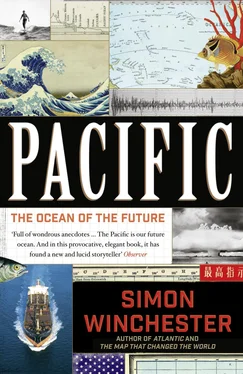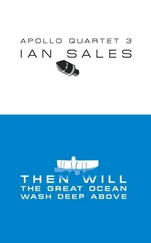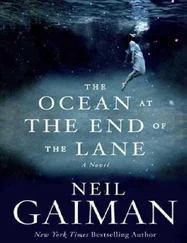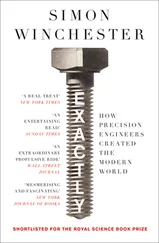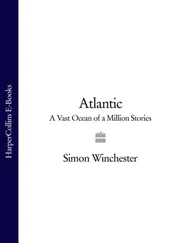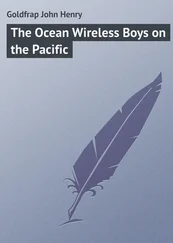For the islanders, it has been a bewildering cavalcade of misfortune. The populated specks of Micronesia have existed under perhaps the most complex colonial history of anywhere in the ocean. This ancient and settled culture first felt the impress of outsiders in 1521, when Magellan landed in the Marianas and predestined Guam’s seizure by Spain—leading to the establishment there of the very first formal European possession in the Pacific. The oldest native civilization in the region, the Chamorros—who had migrated from Southeast Asia as many as four millennia before—were all but destroyed, either by illness or at the hand of these European invaders. Their numbers dwindled to just a few thousand; their language briefly teetered on the edge of oblivion. And yet the sad saga of Micronesia had only just begun.
Germany was next in line to take an interest in the region, driven first by the needs of commerce and then by the pressing demands of pride, expansion, and empire. Spain initially balked at the impertinence of a Northern European rival trying to muscle in on its territory, but eventually acquiesced, and by the end of the nineteenth century, the Marshalls and the Carolines, settled by German traders who established copra and cotton plantations there, came to be administered by German governors. They were protected by a blue-water navy of sorts, the German East Asiatic Squadron, a cruiser force of six ships that eventually settled a fixed base in the docks of Tsingtao, 2 2 Tsingtao beer, its brewery long overseen by a German brewmaster, remains the most visible reminder of the kaiser’s historic influence in eastern China. While the beer retains the old Wade-Giles transliteration of its name, the city itself is now restyled Qingdao. 3 There can be few more impressive examples of German engineering than this eighteen-thousand-ton, thirty-two-knot (and exceptionally beautiful) warship, since she survived not only innumerable strikes by RAF bombers during the war, but also two nuclear tests in the Bikini atoll lagoon, where she was placed as a target for one air-dropped bomb and for a massive underwater weapon called Helen of Bikini . Still floating after the second test, but fiercely radioactive—all her crew would have died—she was towed to Kwajalein, developed a leak, and capsized, her enormous guns falling out of their barbettes and onto the seafloor. One of her screws has now been placed in a museum; the others remain visible at low tide. Prinz Eugen will never be salvaged, however, since her steel is still lethally contaminated.
in China’s Shandong province.
Meanwhile, in the aftermath of the Spanish-American War, the United States opted to take Guam from Spain, and placed a coaling station there for the convenience of its own fleet. To add to this confusing amalgam, Britain began to nibble away at the eastern parts of Micronesia and took the Gilbert Islands for its own, together with the Ellices, which were nearby (though ethnically Polynesian, like Hawaii and Tahiti and points south and west).
Thus might this cumbersome patchwork of island disarrangement have long remained, but for the outbreak of the Great War. Japan had joined forces with Britain from the very beginning of the conflict, and its navy moved quickly to police the sea-lanes of the western Pacific, at the very least to stop all the German trade there. An immediate task was to chase away the German navy and to occupy what some in Tokyo saw as the commercially interesting and strategically important Micronesian islands. By October 1914, Japanese forces had almost all the islands firmly under their control—with long-term implications that would become much clearer only in the aftermath of the Second World War.
This was to be the third formal occupation of Micronesia. Tokyo newspapers of the time regularly showed photographs of bearded and be-medaled Japanese governors opening sugarcane mills and schools and railway lines on island after island. Such images fed into a general Japanese affection for Nan’yō , the South Seas, and almost certainly helped foster the belief in Japan’s inherent right to govern an even larger part of the region—governance that would eventually be employed, as it happened, for a wider and more sinister purpose. “It is our great task as a people to turn the Pacific into a Japanese lake,” cried a noted historian and Diet member, Yosaburo Takekoshi, toward the end of the Great War. “Who controls the tropics controls the world.”
Back then, few others knew why Tokyo so keenly wanted to occupy Micronesia, other than to sate the widespread nineteenth-century romantic yearning for the South Seas, fanned by the turn-of-the-century popularity of vernacular novels featuring wahini and tropical flowers and pink-hued coral beaches. It was a while before the sentiments of men such as Takekoshi took root, but when they did, such attitudes were swiftly hijacked by soldiers who were much more aggressively nationalistic.
Many in the West were uneasy with the knowledge that the Japanese had taken the Micronesian islands from the Germans by such stealth. It turns out there was ample reason for concern. After 1941 and the attacks on Pearl Harbor, on Malaysia, on Hong Kong, these now formidably well-equipped and well-defended islands (Pulau, Chuuk, Jaluit, and the two Marshall Island atolls to which United 154 was now heading, Majuro and Kwajalein) could be used as bases from which to attack Western forces. And it was clear the Japanese had been preparing them for such roles since back in the 1930s, confirming Western suspicions that Japan’s intentions in taking the islands had been for military domination all along.
I once sailed close by the islands, aboard a Japanese ore-carrying ship. She was the Africa Maru , belonging to Sumitomo Metal, and she was carrying 135,000 tons of rich Australian iron ore from the Mount Newman mine in Western Australia up to the blast furnaces of Kashima, to the east of Tokyo. The steel that would be made soon would be pressed into the bodies and axles of Nissan Sentras and Toyota Corollas, no doubt.
The ship’s captain, a friendly man named Shigetaka Takanaka, asked me up to the bridge one day as we threaded our way through the islands, with Yap and Palau far away to port, Chuuk similarly distant to starboard. He was poring over his nautical chart, a large-scale sea map that indicated the position of all these islands, and of his homeland to the north, and which was titled—whether out of optimism or nostalgia, I couldn’t tell—“The Whole Nippon.” He pointed out those smaller islands that were close enough to see on the radar. One we spotted through binoculars, if hazily: a lone mass of green, possibly the islet of Ifalek or the three-island atoll of Lamotrek. Captain Takanaka gestured around the horizon. “Ours, once upon a time,” he said softly. “All of it. We were given them by the League of Nations. But then they were taken away.” He seemed genuinely regretful.
They had been taken away, indeed, and at a terrible price. American forces recaptured them in the spring of 1944, atoll by atoll, in a stuttering series of appallingly bloody set-piece battles that have since passed into military legend. Chuuk was one of the last outposts for the defeated Japanese: their surrender was not taken until September 1945, almost a month after the great formalized surrender ceremony staged in Tokyo Bay, aboard the USS Missouri . The islands of Micronesia—by some estimates nearly three thousand of them, a mere one thousand square miles of dry land peppered across fully three million square miles of sea—have been American, in essence, ever since. The fourth imperial occupation, some might argue.
And the native people have won precious few benefits from all the centuries of foreign attention. Critics claim, not unreasonably, that all that was brought by the years of foreign trespass in the Micronesian islands has been death, disease, and dependency; its residue remains, and it is not a pretty sight.
Читать дальше
